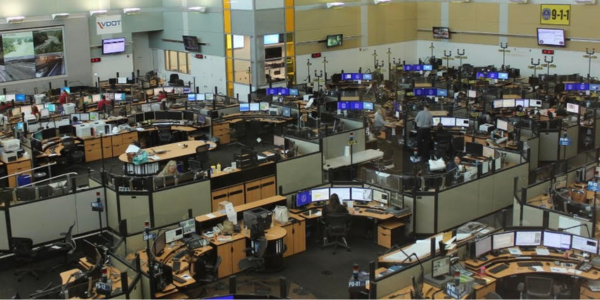
Our Department of Public Safety Communications (DPSC) – the county’s 9-1-1 Center – tested new technology that could change how you call for help.
Today, DPSC tested an AI system called ANET (Assisted Non-Emergency Triage) on some calls to the county’s non-emergency line (703-691-2131). The initial test helped staff see how well the system works and whether callers found it helpful.
While the test was only for a short time frame, it could represent a big shift in how emergency services work.
Calls to 9-1-1 for emergency services were not tested and were answered by human call takers.
Why Test AI?
The numbers tell the story. In 2024, more than 30 percent of calls to the non-emergency line were simple questions or requests for information. People called asking about county services, reporting old incidents or seeking help with non-urgent matters.
These routine calls take time away from trained dispatchers who need to focus on real emergencies. The AI system aims to handle routine calls so human operators can save lives.
This limited test only handled calls that didn’t need police, fire or EMS response. Think of questions about permits, noise complaints from last week, or asking which department handles a specific problem.
How It Worked
When residents called the non-emergency line during the test, here’s what happened:
- Callers to the non-emergency line would speak normally to report problems or ask questions
- The AI system understood both English and Spanish
- It figured out what was needed and either helped callers directly or connected callers to the right department
- Some callers received a text message with links to report the issue online
- If a call was urgent or AI couldn’t help, callers could always ask to speak to a real person
- All data is retained by the county and not shared with open/public AI systems.



 SIGN UP FOR DAILY EMAIL HEADLINES
SIGN UP FOR DAILY EMAIL HEADLINES